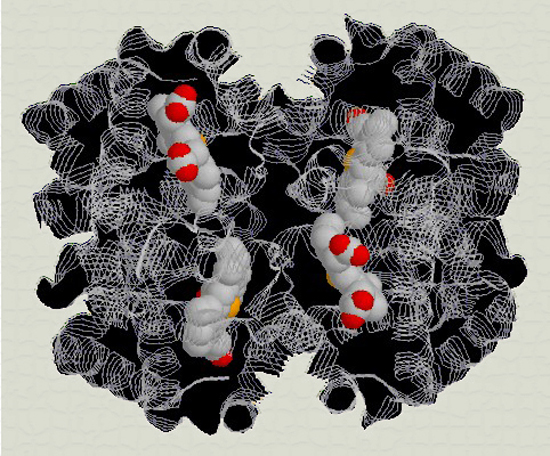Perfused Capillary Density: Oxygen Pressure Field Theory III

Part III: Perfused Capillary Density
Authored by: Gary Grist, BS, RN, CCP, LCP
To View all of Gary Grist”s Posts Regarding OPFT- click here
Perfused Capillary Density
The development of a lethal corner is dependent on the ratio of the capillary X-section to the cylinder X-section and/or a change in oxygen consumption. The ability of the capillary to supply oxygen to the tissues is dependent upon the capillary-to-tissue gradient (the magnitude of the radial vectors) and the distance which the oxygen must diffuse to the most peripheral of the cells of the tissue sleeve.
Although hemoglobin (Hg) concentration is a critical factor in assessing “oxygen delivery”, in reality Hg concentration is not critically important in O2 exchange at the capillary level. Perfusionists often hemodilute a patient’s Hg to 1/3 or less of normal without adverse effects. According to Oxygen Pressure Field Theory, a high Hg concentration is important only in that it helps to sustain the capillary-to-tissue gradient. As long as intracapillary velocity remains normal (about 200 microns/sec) the body can easily adapt to a major reduction in Hg. It is only when intracapillary velocity falls that a low Hg becomes important.
A reduction in Hg is not usually responsible for tissue hypoxia. Envision the basic Krogh cylinder model with radial vectors of 60 and 30 mmHg at the arterial and venous ends, respectively. The capillary-to-cylinder X-section ratio is 1 to 4 which results in a median tissue pO2 around 20 mmHg.
Now suppose that tissue O2 consumption doubles (an exponential increase). Since the transfer of O2 from capillary to tissue is gradient dependent, the arterial radial vector must double to 120 mmHg and the venous radial vector must double to 60 mmHg. This means that intracapillary pO2 values would need to increase to 140 mmHg and 70 mmhg at the arterial and venous ends, respectively.
This is impossible since the intracapillary pO2 can never exceed approximately 100 mmHg while breathing room air at sea level and even less at altitude. Normally, in the face of increasing O2 consumption, increasing the capillary-to-tissue gradient is not an option. Unless something else happens, the median tissue pO2 will drop and the Krogh cylinder tissues will become hypoxic, particularly at the periphery (a lethal corner develops).
In reality, on room air, the amount of O2 that a single capillary can provide to its surrounding tissues is quite limited. Simply increasing intracapillary velocity or carrying capacity has little effect on O2 transfer from the capillary above a certain point. Even if intracapillary velocity doubles (an exponential increase) the maximum intracapillary pO2 would still be only 80 mmHg, far too low to allow for the needed 120 mmHg capillary-to-tissue gradient. In point of fact, the cardiac output in a healthy person does increase as tissue O2 consumption increases, but not with the goal of increasing intracapillary velocity.
Where once oxygen transfer was adequate with a capillary-to-cylinder ratio of 1 to 4, in the face of increasing O2 consumption, a 1 to 4 the ratio is too large to prevent formation of a lethal corner.
To compensate, the human body opens nearby capillaries. These newly opened capillaries (called nutrient capillaries) incorporate some of the tissue into their cylinders which was part of the original cylinder. In this newly reconfigured capillary bed, the capillaries would conform so that their individual tissue volumes would approximate 1/2 the volume of the original cylinder.
In other words, the capillary to cylinder X-section ratio would drop from 1/4 to 1/2. In effect, since the body cannot significantly increase the transfer of O2 from individual capillaries to the tissues, the body opens more capillaries. The increased cardiac output is needed to drive the blood through these new capillaries and maintain the normal intracapillary velocity of 200 microns/sec. The new cylinders formed are smaller and shallower.The relative number of open capillaries in a specific volume of tissue is called the Perfused Capillary Density (PCD).
In a healthy individual, PCD increases as O2 consumption increases and decreases as O2 consumption decreases. PCD can also be quite regional. Around a healing scar or in the blushing cheek PCD can be very high.In the brain of a comatose patient or in the kidneys of a patient with acute tubular necrosis PCD can be very low. The body’s ability to control PCD is key to performance and even survival. A marathon runner whose body can maximize PCD will win the race over another runner whose body forms deeper, less efficient tissue cylinders.
The process of “warming up” queues the body to increase PCD. Without it, muscles soon cramp from hypoxia and waste product build-up. A patient’s recovery from cardiopulmonary deficits is dependent upon maximizing PCD in the presence of reduced cardaic output. This helps to minimize the lethal corner. Another patient with seemingly adequate hemodynamics but poor PCD may develope a lethal corner and die.
The idea that radial vector gradients are more important than carrying capacity is the antithesis of typical perfusion school teaching. Perfusionists are taught that increasing the arterial pO2 to over 150 mmHg is unnecessary because the increased O2 content of the blood is not significant for pO2 values greater than 150 mmHg. Supposedly, once the Hg reaches maximum saturation any increase in arterial pO2 is superfluous. However, Oxygen Pressure Field Theory says that the capillary-to-tissue gradients are more important than carrying capacity.
We have all seen patients who are unstable at normal arterial pO2 values but perk-up significantly when breathing concentrated oxygen, provided their lungs are healthy enough to provide adequate O2 transfer. These patients invariably have poor PCD. This can be caused by cardiac failure, hypovolemia, sepsis, trauma, circulatory steal, edema, etc. Since the body fails to reconfigure tissue cylinders into smaller, shallower units, this can be compensated for, at least partially, by increasing the magnitude of the radial vectors. By breathing concentrated O2 the patient greatly increases the radial vectors at the arterial end of the cylinder.
In our model, an arterial pO2 of 500 mmHg will increase the radial vectors from 60 mmHg to 480 mmHg at the proximal end of the Krogh cylinder. This huge radial vector floods the arterial end of the tissue cylinder and augments the secondary source of tissue oxygenation; axial vectors.
Addendum:
The question for perfusionists is how can Perfused Capillary Density be assessed?
Since PCD is a relative thing how can it be measured? Some methods currently used are very crude. Capillary refill in the skin can be very reassuring when it is 1-2 seconds and very alarming when it increases to 4-5 seconds. The priority of skin circulation is temperature regulation, not oxygenation. The skin needs very little oxygen unless it is healing, as around a recent incision. When exposed to cold the first skin response is blanching to prevent hypothermia. However, if frostbite threatens, the skin flushes in an attempt to keep itself warm and prevent damage to the extremities.
Core-to-toe temperature gradient is actually a very good way to assess the body’s ability to maintain heat to the extremity and therefor gross circulation. However, the transfer of heat is not blocked by thick vessel walls like O2 transfer is. An extremity or organ can stay warm if the gross circulation remains intact, but may become hypoxic if PCD is poor. If the perfusionist could actually measure the tissue pO2, then relative PCD could be readily assessed.
But, can tissue pO2 be measured clinically, and if so, which tissue would be the best guide?
In a practical sense, tissue pO2 cannot be measured in the clinical setting without special equipment. And even then the measurements are in the skin or skeletal muscle, not a vital organ.A possible option , however, is to measure some fluid that bathes a vital organ an does not come into contact with the blood prior to exiting the body. Urine is such a fluid. In fact studies of urine pO2 values have been demonstrated to reflect relative tissue pO2 in the retroperitoneal space that contains the kidneys and urinary tract. The urine sample must be taken from the Foley or drainage set without being exposed to room air. Since urine has no Hg to stabilize its O2 content, it will quickly equilibrate to the room air pO2 once exposed. So the sample must be taken and tested immediately at the bedside.
The normal adult breathing room air has a urine pO2 of about 55 mmHg. This reflects the average tissue pO2 rather than the median tissue pO2 which is usually about 20 mmHg. In the healthy person breathing 100% oxygen the urine pO2 will increase to about 2/3s of the arterial pO2. The ratio between the urine pO2 and the arterial pO2 is reflective of tissue pO2 changes. For example, a urine pO2 of 55 mmHg might seem normal, but if taken from a person breathing 100% oxygen it would demonstrate a significant tissue pO2 deficit.
A problem exists in that if kidney function stops because of kidney tissue hypoxia there would be no urine to measure. A solution might be to design a Foley tipped with a Clark electrode (oxygen sensing electrode) that dwells in the bladder and reflects ongoing changes without urine output of any significance. Foley catheters come with a temperature sensor.
Why not an oxygen sensor?
In many ways a Clark electrode tipped Foley would be a better monitor of patient status than a pulse oximeter or even an arterial blood gas, because it would be reflective of tissue pO2 in a vital organ. If you get it to the market save me a 10% royalty. 🙂


